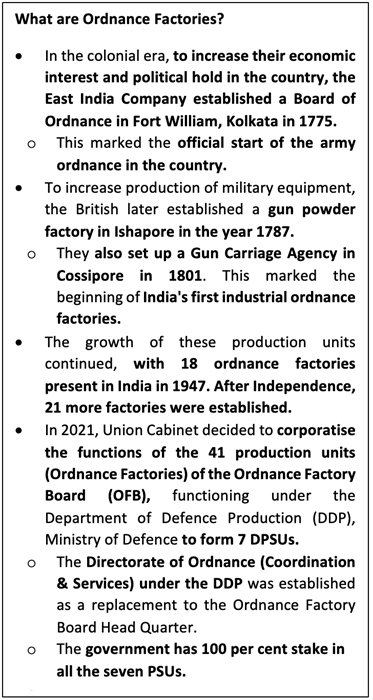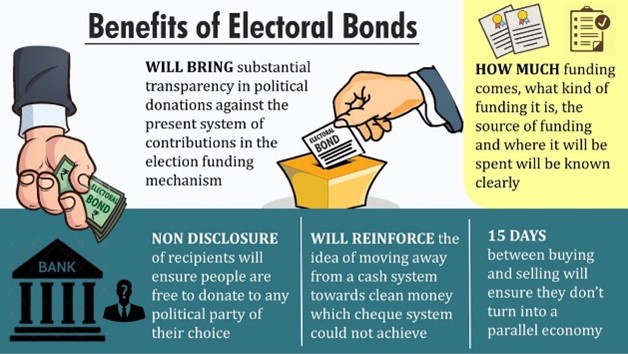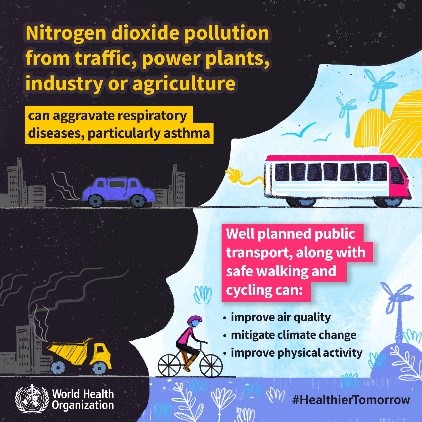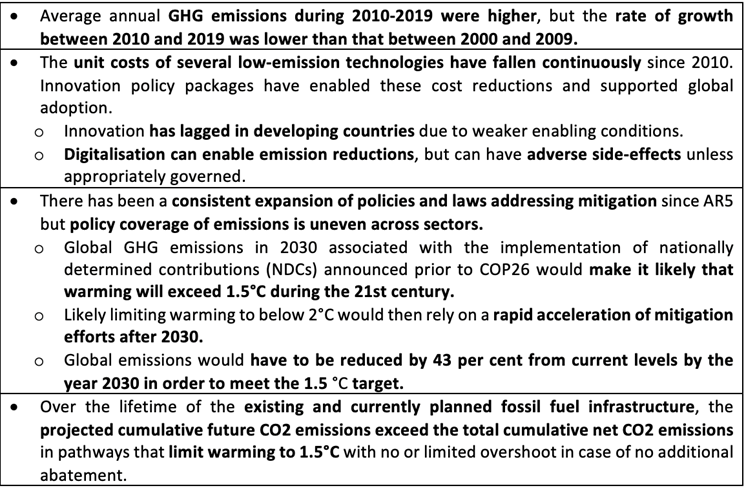Monday, 11th April 2022
RBI’s stance in MPC Meeting
In News
Amid Global tensions and domestic price rise, the RBI Monetary Policy Committee continues with 'accommodative' stance, keeps repo rate unchanged.
Key Takeaways
- Repo rate remains unchanged: The RBI decision to keep Repo rates unchanged at 4% for the 11th time in a row, will help banks to keep interest rates in the financial system unchanged, aiding growth in the economy.
- Reverse repo rate unchanged, SDF introduced: A stable Reverse repo rate or Fixed Reverse Repo Rate (FRRR) means that the central bank wants to retain the money, or liquidity, in the banking system.
- The RBI has clarified that FRRR will remain part of the RBI’s toolkit, and its operation will be at the discretion of the RBI for purposes specified from time to time.
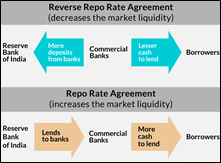
- The Standing Deposit Facility (SDF) will be an additional tool for absorbing liquidity without any collateral.
- The SDF, with an interest rate of 3.75 per cent, will replace the fixed rate reverse repo (FRRR) as the floor of the Liquidity Adjustment Facility (LAF) corridor.
- Both the standing facilities – the MSF and the SDF – will be available on all days of the week, throughout the year.
- The FRRR along with the SDF will impart flexibility to the RBI’s liquidity management framework.
- The extraordinary liquidity measures undertaken in the wake of the pandemic, combined with the liquidity injected through various other operations of the RBI, have left a high liquidity overhang in the system. Hence such Liquidity adjustment methods have been employed.
- Accommodative stance continues: RBI also decided to remain accommodative while focusing on withdrawal of its current stance to ensure that inflation remains within the target band going forward.
- An accommodative stance means the central bank is prepared to expand the money supply to boost economic growth. The central bank, during an accommodative policy period, is willing to cut the interest rates.
Inflation vs Growth:
- The RBI has now decided to focus on inflation over growth as inflation remains above the RBI’s upper band of 6%.
- The policy panel decided to remain accommodative while focusing on withdrawal of accommodation to ensure that inflation remains within the target going forward, while supporting growth.
- Due to the cost-push inflation, sudden withdrawal of accommodative stance may push the economy towards stagflation.


Sources:
- RBI hints at shift in stance, yields hit near 3-yr high:
- Reverse repo out, SDF in: RBI’s new liquidity absorbing tool:
- Reserve Bank’s policy thrust: Monetary tightening to tackle inflation:
- Key takeaways from MPC meeting: Repo, Reverse repo rates unchanged, SDF introduced:
- RBI Monetary Policy Highlights: MPC continues with 'accommodative' stance, keeps repo rate unchanged:
- Decoding RBI’s monetary policy decisions:
- Repo Rate vs. Reverse Repo Rate:
Look out circular
In News
CBI has put a Look Out Circular against former Amnesty India chief Aakar Patel.
About the News
- Arguing that Aakar Patel is a flight risk the Central bureau of investigation (CBI) has released a Look Out Circular (LOC) to prevent him from leaving India.
- Although there is no specific law but an LOC is issued based on guidelines set by the Home Ministry through letters and office memorandum issued in 1979, 2000 and 2010.
- The idea of LOC has gained traction especially after episodes of Vijay Mallya and Nirav Modi who were big offenders who left the country never to return
What is a Look Out Circular?
- About: An LOC is issued by various agencies and government bodies to prevent a person from leaving the country. It is sent to the Bureau of Immigration (BoI) in a prescribed format with details of the person who it intends to prevent from going abroad.
- Exit control list: The BoI maintains a register of such circulars and once a person against whom an LOC has been issued reaches immigration, the BoI is expected to inform the agency that has issued the LOC.
- Arrest or detention: The BoI is not authorised to arrest or detain anyone. The next course of action is decided by the agency that has issued the LOC.
- Validity: An LOC is valid for only one year and has to be reissued after it expires.
- Who can issue circulars: According to the Ministry of Home Affairs, LOCs are initiated by a large number of authorised officers who include:
- Administrative officers: An officer not below the rank of Deputy Secretary to the Government of India; or an officer not below the rank of Joint Secretary in the State Government; or District Magistrate; or Superintendent of Police.
- Law officers: Designated officers of various law-enforcing and security agencies including CBI, National Investigation Agency (NIA), Enforcement Directorate, Narcotics Control Bureau, Directorate of Revenue Intelligence, Central Board of Direct Taxes, Central Board of Excise and Customs; IB and R&AW or designated officer of Interpol.
- Economic officer: An officer not below the rank of Additional Director in SFIO, Ministry of Corporate Affairs; or an officer not below the rank of Chairman /Managing Director/chief Executive of any Public Sector Bank;
- Judicial officer: as per directions of any criminal court in India.
- Circumstances under which LoC can be issued: Following a Delhi High Court order, in 2010, the MHA issued an office memorandum that said recourse to LOC was to be taken in “cognisable offences under IPC (Indian Penal Code) or other penal laws”. It said the issuing agency is supposed to provide reasons for opening an LOC in the prescribed proforma without which the subject of an LOC will not be arrested/detained.
- In cases where there is no cognisable offence under IPC or other penal laws, the LOC subject cannot be detained/ arrested or prevented from leaving the country. The originating agency can only request that they be informed about the arrival / departure of the subject in such cases.
- Deliberate evading: LOC can be issued where the accused was deliberately evading arrest or not appearing in the trial court despite NBWs and other coercive measures and there was likelihood of the accused leaving the country to evade trial/arrest.
- Exceptional circumstances: In exceptional cases, an LOC can be issued without complete parameters and /or case dealing terrorists, anti-national elements, etc in larger national interest.
- Power of Courts: It can quash an LOC if it has not been issued in the prescribed format, or by the authorised agency or officer. It can also set aside an LOC if it feels the grounds for issuance of the LOC are not fulfilled.
What are the major issues with LOC?
- Misuse of power: In several court cases, there have allegation against misuse of the power to issue an LOC mainly due to absence of a law governing it.
- Right to be informed: There is no guideline regarding this mentioned in any government order. While the LOC-issuing authority has to record the reasons in the prescribed proforma to be given to the BoI, there is no specific provision for informing the subject.
- Protection against default arrest: The aim of LoC is merely to prevent a person from leaving the country. Once that is prevented, the BoI informs the concerned agency, which may or may not arrest the person.
Sources:
Indonesia’s palm oil crisis and its implications for India
In News
The world’s largest producer and exporter of palm oil, Indonesia, has been currently facing domestic shortages.
About the News
- This situation has lead the Indonesian government to control its price and to impose export curbs.
- The price cap had earlier led to the product disappearing from market shelves.
- Following this, the government has also made it compulsory for exporters to sell 20% of their planned shipments in the domestic market, at predetermined prices.
- The domestic market obligation now stands at 30%.
Palm Oil Production in Indonesia
- Indonesia’s palm oil production for 2021-22 (October-September) stood at 45.5 million tonnes (mt) which is almost 60% of the total global output.
- This is way ahead of the next bigger producer-Malaysia (18.7 mt).
- It is also the world’s No. 1 exporter of the commodity, at 29 mt, followed by Malaysia (16.22 mt).
- However, the country has seen domestic prices of branded cooking oil spiral, from around between March 2021 and March 2022.
Anticipated Reasons behind the price rise:
There are two plausible reasons behind the soaring prices:
- Supply disruptions: Supply disruptions due to both man-made and natural factors in other cooking oils, especially sunflower and soyabean.
- Russia’s recent invasion of Ukraine: Ukraine and Russia together account for nearly 80% of the global trade in sunflower oil. Thus Russia’s recent invasion of Ukrainehas resulted in port closures and exporters avoiding Black Sea shipping routes.
- Sanctions against Russiahave further curtailed trade in sunflower oil, the world’s third most exported vegetable oil.
- Soyabean oil, too, is facing supply issues due to dry weather in South America.
- Supply tightness in sunflower and soyabean — from war and drought has in turn, transmitted to palm oil.

- Palm oil as a Bio-fuel: The second factor is linked to petroleum, more specifically the use of palm oil as a bio-fuel.
- The Indonesian government since 2020 has made 30% blending of diesel with palm oil mandatory as part of a plan to slash fossil fuel imports.
- Palm oil getting increasingly diverted for bio-diesel is leaving less quantity available, both for the domestic cooking oil and export market.
Implications for India
- India is the world’s biggest vegetable oils importer.
- Out of its annual imports of 14-15 mt, the Indonesia’s share is of palm oil (8-9 mt), followed by soyabean (3-3.5 mt) and sunflower (2.5).
- Indonesia’s restrictions on exports consider its domestic demand obligations and its ambitious bio-fuel programme. So, in that sense, India must get used to a lower supply from Indonesia.
Source:
- Explained: Indonesia’s palm oil crisis, and its implications for India
- Explained: Indonesia’s palm oil crisis, and its implications for India
Image source:
ILO Foundation
On 11 April 1919, the International Labour Foundation (ILO) was formed. International Labour Organization (ILO), specialized agency of the United Nations (UN) dedicated to improving labour conditions and living standards throughout the world. Established by the Treaty of Versailles as an affiliated agency of the League of Nations, the ILO became the first affiliated specialized agency of the United Nations in 1946. In recognition of its activities, the ILO was awarded the Nobel Prize for Peace in 1969. India is a founder member of the International Labour Organization. Among intergovernmental organizations the ILO is unique in that its approximately 175 member states are represented not only by delegates of their governments but also by delegates of those states’ employers and workers, especially trade unions. Among the ILO’s many publications are the International Labour Review and the Year Book of Labour Statistics. The International Labour Office in Geneva, Switzerland, composed of the permanent Secretariat and professional staff.

Sources:
India-Nepal Relations
In News
Nepalese Prime Minister recently visited India. The last Head of State/Head of Government-level visit from Nepal was in May 2019.
Important Agreements made during the Visit
- Nepal and India signed four agreements and came up with the blueprint on cooperation on the power and energy sector.
- The four agreements are: Nepal officially joining the international solar alliance, Indian technical assistance to Nepal’s railway sector, cooperation in the field of petroleum sector and exchange of expertise between Nepal Oil Corporation and Indian Oil Corporation.
- There was also the launch of the first broad-gauge passenger train service between India’s Jayanagar and Nepal’s Kurtha (35 km rail section, 3 km of which lies in the Indian state of Bihar and the rest in Nepal), the hand-over of the Solu corridor 132 kV power transmission line and substation project by India to Nepal and the progress of the construction of 132 health facilities across 10 districts in Nepal under a Government of India (GoI) grant.
- The two countries announced the launch of the Indian RuPay card in Nepal, with the domestic variant of the RuPay card (roughly 83% of all RuPay cards issued) to be functional on about 1400 Point of Sale (POS) machines in Nepal. The move makes Nepal the fourth country outside India where RuPay is functional after Bhutan, Singapore, and UAE.
- Both the leaders proposed to resolve the boundary dispute through the bilateral mechanism. Both have also agreed to expedite the Pancheshwar Project.
- Pancheshwar Multipurpose Project (PMP) is a bi-national hydropower project to be developed in Mahakali River bordering Nepal and India.
- Both also discussed trade and commerce and initiatives to be taken for border connectivity as well as construction of Nepal Police Academy, Integrated Check Post in Nepalgunj, the Ramayana Circuit.
Nature of India-Nepal Relations
- As close neighbours, India and Nepal share unique ties of friendship and cooperation characterized by an open border and deep-rooted people-to-people contacts of kinship and culture.
- There has been a long tradition of free movement of people across the border. Nepal shares a border of over 1850 km with five Indian states – Sikkim, West Bengal, Bihar, Uttar Pradesh, and Uttarakhand.
- The India-Nepal Treaty of Peace and Friendship of 1950 forms the bedrock of the special relations that exist between India and Nepal. Nepalese citizens avail facilities and opportunities on par with Indian citizens in accordance with the provisions of the Treaty. Nearly 8 million Nepalese citizens live and work in India.
- In the wake of the 2015 earthquake in Nepal, India was the first responder and carried out its largest disaster relief operation abroad (Operation Maitri). India extended US$ 1 billion Nepal as part of its long-term assistance for post-earthquake reconstruction in housing, education, health and culture heritage sectors.
- India remains Nepal’s largest trade partner, with bilateral trade crossing US$ 7 billion in FY 2019-20. India provides transit for almost the entire third country trade of Nepal. India’s export to Nepal has grown over 8 times in the past 10 years while exports from Nepal have almost doubled. Despite the difficulties due to the pandemic, India ensured uninterrupted flow of trade and supplies to Nepal.
- Nepal is India’s 11th largest export destination, up from 28th position in 2014. In FY 2021-22, it constituted 2.34% of India’s exports. In fact, exports from India constitute almost 22% of Nepal’s GDP.
- As part of Covid-19 assistance, India had supplied more than 23 tonnes of medicines and medical equipment to Nepal on Grant basis during the first wave of COVID-19. India has recently resumed the supply of Covid-19 vaccine to Nepal. Till date, more than 9.5 million doses of these vaccines have been sent to Nepal.
- The 15th edition of India-Nepal Joint Military Training, Exercise Surya Kiran between Indian Army and Nepali Army was conducted in Uttarakhand during September-October 2021.
Issues constraining India- Nepal relations
- Demand for Review of 1950 Treaty of Peace and Friendship: Today, this treaty is viewed as a sign of an unequal relationship, and an Indian imposition. The idea of revising and updating it has found mention in Joint Statements since the mid-1990s. It has been discussed sporadically, but in a desultory manner, by the Foreign Secretaries in 1997, and even at the ministerial level at the 2014 Joint Commission.
- Constitutional Crisis in Nepal: In 2015 Nepal promulgated its new constitution, triggering a trade blockade on the India–Nepal border. The relationship suffered as India felt that the new constitutional provisions discriminated against the Terai people (e.g., Madhesis) who share social and family relations across the border.
- Demonetisation policy (2016) of India affected Nepal severely. This was discussed in the Nepalese Parliament. India’s refusal to accept demonetised bills with the Nepal Rastra Bank worth just INR₹7 crore have not helped in securing it a better image in Nepal.
- Role of South Asian Association for Regional Cooperation (SAARC)- India has lost interest in SAARC due to tensions with Pakistan and shifted towards— BIMSTEC, the Bangladesh Bhutan India Nepal Initiative (BBIN) and Act East policy — rather than strengthening SAARC.
- During fourth BIMSTEC Summit in Kathmandu (2018), Nepal called for revival of SAARC and argued that BIMSTEC cannot replace it. Mistrust grew after Nepalese Army withdrew from the first BIMSTEC military exercise held in India in 2018 and later joined a military exercise with China.
- Nepal is also building diplomatic ties with China, in part to counter India’s interference in Nepalese affairs. The Chinese outreach in Nepal has intensified after 2015 trade blockade. While Nepal has joined the Belt and Road Initiative, India is not a part of this project.
- In 2016, Nepalese PM visited Beijing to negotiate an Agreement on Transit Transportation. Three years later, a Protocol was concluded with China providing access to four seaports and three land ports.
- The first ever visit of the Chinese Defence Minister took place in March 2017, followed by joint military exercises a month later. A military grant of $32 million was also announced.
- China has overtaken India as the largest source of foreign direct investment. In 2019, China’s President visited Kathmandu. Annual development assistance has been hiked to $120 million. Today, China is also engaged with airport expansion projects at Pokhara and Lumbini.
- Border dispute: Nepal’s territorial dispute with India over Lipulekh came to the forefront in May 2015, when India and China agreed to develop transit and trade via the region. Nepal protested against the agreement, alleging violations of Nepal’s territorial integrity. The issue resurfaced in November 2019 when India issued a new political map that included the disputed territories within India’s international borders.
- The issue united the Nepali public and parliamentarians against India’s occupation. In June 2020, Nepal’s Parliament approved the country’s new map that includes territories within India — Limpiyadhura, Lipulek and Kalapani.
- Also, inauguration of the “new road to Mansarovar” in May 2020 by India, has strained the relations as a section of the road passes through the disputed territory.

Complicated Geopolitics and Concluding Remarks
- Geopolitics is a complicated challenge for Nepal, whose geography requires it to make best use of its position between China and India. This was seen when the Nepalese Parliament ratified a S.$500 million grant assistance-Millennium Challenge Corporation (MCC) pact, there were street protests and big-time social media campaigns supported by China.
- However, India chose to remain silent and offered other routes for power transmission as an alternative to the MCC. With relations between India and the United States further complicated by the China factor and India abstaining on the Russia vote in the United Nations even as Nepal voted in favour of it, the problems have continued to mount.
- The Chinese engagement has been very deep as seen in the anti-MCC campaign. U.S. grant and investment activities are seeing a revival post the MCC ratification and India does not want to see other powers active in Nepal.
- The need today is to avoid rhetoric on territorial nationalism and lay the groundwork for quiet dialogue where both sides display sensitivity as they explore what is feasible. India needs to be a sensitive and generous partner for the “neighbourhood first” policy to take root.
Question: India and Nepal must return to the core strength of their unique social, cultural, strategic, political, and economic ties. Explain
Sources:
- Geopolitics Looming Ever Larger in India-Nepal Relations:
- Nepal’s Geopolitical Dilemma:
- India-Nepal launch multiple projects, sign four agreements during Modi-Deuba meeting:
- India’s Neighbourhood | Pakistan, Sri Lanka in the doldrums, a ray of hope in Nepal
- Deuba’s India Visit Arrests Drift in India-Nepal Relations
- Repairing the complex India-Nepal relationship
- Nepal, India sign four agreements as Deuba, Modi hail age-old ties:
- India, Nepal pledge to strengthen bilateral ties
- India, Nepal vow to further expand bilateral ties
- On boundary issue, India, Nepal agree to address it in ‘responsible manner’ through talks
- India-Nepal train services begin today; Here's all you need to know
- Open borders between India, Nepal should not be misused: PM Modi's message
- An opportunity to repolish India-Nepal ties
- India-Nepal Bilateral Brief
- Nepal-India Relations
- About India-Nepal Relations
- India-Nepal ties must be dominated by opportunities of future, not frustrations of past
- Delhi must focus on India’s relations with Nepal
- India must engage with Nepal — without intervening
- India and Nepal need to talk with, not at each other
- Interpreting the India-Nepal border dispute
- A reset of India–Nepal relations
Garden city Bengaluru
This is image of the flowering trees of Bengaluru. Bengaluru, is famously known for its vast parks, gardens and more specifically for its flowering trees. The pre-monsoon months of March, April and May comprise the summer season in Bengaluru, rightly called the garden city. It is said that the flowering trees were first introduced by the German botanist Gustav Hermann Krumbiegal, who was hired by Maharaja Krishnaraja Wodeyar as the economic botanist of Bengaluru's Lal Bagh. The approach was such that the new trees lined the city's avenues at a different time of the year. Chosen from around the world, but mainly from South America, these trees flowered in a serial fashion. Delonix regia or Gulmohar which is a native of Madagascar, starts to bloom with the onset of the summer season. Tabebuia rosea or Pink Poui is one of the many flowering trees which is almost leafless when in bloom. The bougainvillea originate from tropical South and Central America, where they're called paper flowers.

Source:
BI: Dove, Hawk or a Pigeon
- Context: The Monetary Policy Committee (MPC) of the RBI had recently met for the first monetary policy review of the new financial year (2022-23).
- Central banks and central bankers (the Governors and the members of the Monetary Policy Committee (MPC)) are either viewed as “doves” or “hawks”.
- Those central banks (or bankers) who have a very low threshold for tolerating variation from the targeted inflation level (or a range), and who keep their eyes peeled for such divergence, and immediately swoop in to raise interest rates are called “Hawks”.
- “Doves”, on the other hand, are those that favour boosting growth (by keeping the interest rates low) and are far more willing to risk having higher inflation.
- A “Pigeon” refers to a central bank that falls in between the doves and hawks. Essentially, a pigeon is characterised by monetary policy inertia.
- In other words, those MPCs where there is no single head and which try to arrive at a decision by consensus are those that tend to become pigeons.
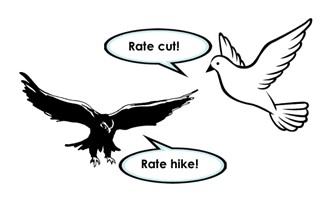
Source:
- ExplainSpeaking: Is the RBI a dove or a hawk or a pigeon?
- RBI shows hawk and dove distinctions are for the birds, not economics
Image source:
Sanctions on Alrosa of Russia
- Context: The new set of US sanctions on diamond miner Alrosa has hit the diamond processing centres of Gujarat.
- The sanction is in the backdrop of Russian invasion of Ukraine.
- Alrosa is a state-owned enterprise (SOE) of Russia and is the largest diamond mining company of the world which supplies “90%” of Russia’s rough diamonds.
- Diamond has been a major component of India-Russia trade in recent years and India’s diamond trade is heavily dependent on imported rough diamonds (10% of Alrosa's total production is directly imported by India) which are processed in the Surat region of Gujarat.
- The sanction thus has led to a drop in work for cutting and polishing units in Surat, Saurashtra and Bhavnagar due to a supply crunch.
- Working hours have been reduced to eight hours from 12 and units have declared two days off weekly, which is having a bearing on the wages of 800,000-1 million workers engaged in cutting and polishing.
- Out of the total 4.64 million workersin the gems and jewellery sector in India, a major portion is employed in the diamond business.
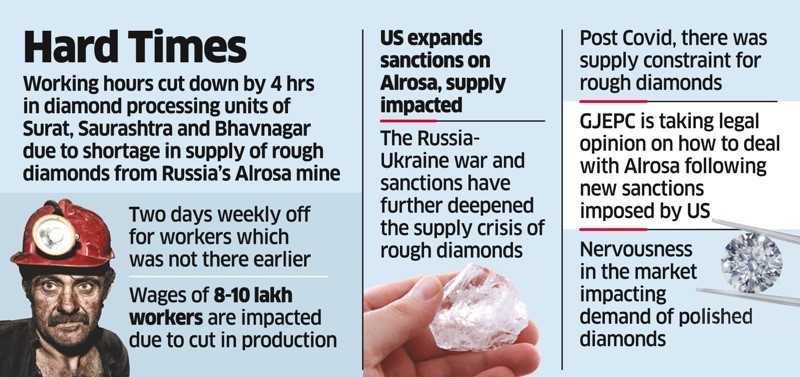
Source:
- India studying U.S. sanctions on Russian diamond major Alrosa
- Fresh sanctions on Russia cut Gujarat diamond workers, too
Image source:
Exercise Khanjar
- Context: The 9th edition of exercise Khanjar that commenced at Special Forces Training School, Bakloh (HP) has culminated recently.
- It is an India – Kyrgyzstan Joint Special Forces exercise.
- During the exercise, special Forces contingents from India and Kyrgyzstan shared their expertise and best practices of tactics, techniques and procedures to counter existing and emergent threats across the entire spectrum of conflict.
- Combat shooting, sniping, survival in mountains, hostage rescue drills and unarmed combat were also practiced extensively during the Exercise.
- The joint training further strengthened the existing bond between India and Kyrgyzstan that has fostered over years of mutual respect for strategic autonomy, democratic values and zero tolerance for terrorism.
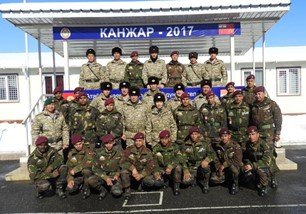
Source:
- INDIA – KYRGYZSTAN JOINT SPECIAL FORCES EXERCISE CONCLUDES AT BAKLOH (HP)
- 9th Edition of India-Kyrgyzstan Joint Special Forces Exercise culminated
Image source:
Lightning Location Networks
- Context: Indian Institute of Tropical Meteorology (IITM), has established a lightning location network at 83 places in the country to detect and locate lightning strikes with utmost accuracy.
- The central processor of this network that is located at IITM will receive and processes the signal received from the network and identifies the location of lightning strikes with less than 500 metres accuracies.
- The output from this network is shared with IMD and various State Governments and is used for nowcasting purposes.
- From National Weather Forecasting Centre in IMD, these forecasts and warnings are given on the meteorological sub-divisional scale whereas State Meteorological Centres issue the same at the district level.
- Other initiatives in this regard include:
- Damini Lightning apps developed by IITM-Pune- that alerts the person if lightning is happening near the person by GPS notification within a 20 km and 40 km radius.
- Guidelines for Action Plan on Thunderstorm & Lightning/ Squall and Strong wind in 2018-2019 by NDMA.
- NDMA run campaigns for awareness generation among masses on ‘Thunderstorm & Lightning’ on Doordarshan and All India Radio
- Special panel discussion (TV Debate) on ‘AapdakaSaamna’ show on Doordarshan.

Source:
- IITM Pune installs 83 lightning location networks to detect, locate lightning strikes
- To detect and localise lightning strikes, IITM Pune has installed 83 lightning location networks.
Image source:
India’s IPR regime requires a makeover: HBL
Essence: Parliamentary Standing Committee on Commerce recently came up with an analysis of IPR ecosystem in India and suggestions to improve it further. The report has lauded 30% surge in India’s domestic filing of patents and tripling in patents granted over last five years. India has potential to do better given its large pool of creative individuals with efficient and innovative ideas. However, because of factors like low expenditure on research and development, India is still far away from US and China in creating Intellectual Properties.
The report concludes that a multipronged approach focusing on effective policies, creating fiscal incentives, and providing technological infrastructure along with a robust legislative framework will be required to create robust IPR ecosystem in India.
Why should you read this article?
- To appreciate the improvement made in India in terms of IPR generation.
- To understand steps which need to be taken to further improve IPR ecosystem in India.
Source:
India’s role in a disordered world: TH
Essence: The editorial speaks about the undisputed leadership of the developed world over international institutions like UN, WB, IMF and WTO. Throwing out Russia from G8 and now a move to remove it from G20 is a step towards showing how the powerful, financially rich nations can influence politics.
In fact, through policies like flow of finances from rich to poorer nations have increased the disparities further. The philosophy of capitalism and democracy, both modern day concepts, run antagonistic to each other. By the principle of “cumulative causation”, the countries which have traditionally held power want to retain influence and hegemony.
This is the story of nations and society alike. Women and marginalized sections have had to protest, struggle and demand for rights in the so-called democratic countries. Countries like Iraq, Afghanistan, Chile, Russia, etc. are facing financial stress and so are their societies.
Those in power will continue to resist sharing it. A country like India must not be forced by such influences and must continue to demand equality and rights for the less empowered.
Why should you read this article?
- To understand the reasons for formation of global institutions like G7, G20, etc.
- To know the concept of cumulative causation and its examples from today’s world.
Source:
Getting serious about supporting the care economy: TH
Essence: The editorial highlights the social importance and economic value of care economy and gives a path on how it could promote sustainable living. Care economy constitutes of looking after activities, work, and relationships, that involve direct activities like feeding a baby/nursing an ill partner or indirect activities like cooking and cleaning. Presently, such work is hardly recognized or paid and receive unfair value at individual, community, or government level. Moreover, most of these jobs relate to women employment and empowerment.
Though the demand for care workers and care economy has surged post covid in 2020, investments have not flown in the economic system in proportional manner. Maternity leave, a 26-weeks of childcare leave in India, is a major component of care ecosystem, but available to women in formal employment. Furthermore, lesser paternity leave imposes the burden of care on women.
Presently, India spends 1% of GDP on care economy. Provision for creches, old age homes, children’s homes do exist, but their implementation is dismal. Decent domestic work conditions are opaque. Implementation of prevention of sexual harassment at workplaces and domestic violence laws is a challenge.
In this scenario, International Labor Organization proposes the 5R framework- Recognition, Reduction, and Redistribution of unpaid care work, promotes Rewarding care workers with more and decent work, and enables their Representation in social dialogue and collective bargaining.
Why should you read this article?
- To know the concept and work involved in care economy
- To understand how care approach could empower women through ILO’s principles
Source:
Arogya Kunji
Background
- Health is one of the major components for human development. But it is not accessible to majority of the people due to weak infrastructure and delivery mechanism.
- Chatra district of Jharkhand, which falls under the 115 backward districts also faced the same fate, until the District Administration started an innovative initiative i.e., Arogya Kunji.
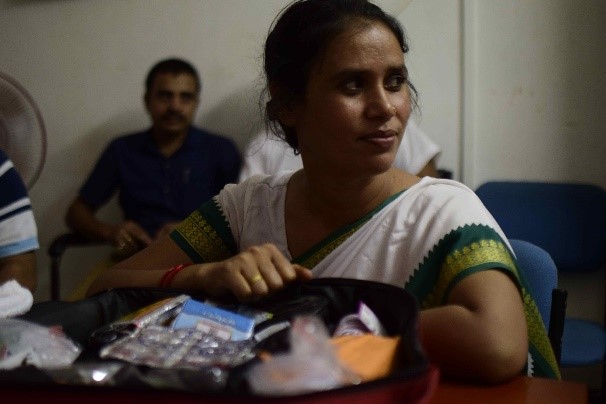
About Arogya Kunji aka Sahiya Upchar Kit
- As the name suggests, Arogya Kunji is a small bag consisting of medicines and essential health utilities.
- The bag generally consists of contraceptives, sanitary pads and general medicines for common health ailments for children as well as elders.
- The frontline health workers especially the Sahiyase., ASHA workers play a major role in the distribution of these kits at the village level.
- This initiative is implemented by the District Administration with the continued support of Aspirational District Fellow under the Convergence
- The price of each kit is 1870, and till now about 1609 such kits have been distributed in the Chaitra district alone.
Quote: “Give people what they need: food, medicine, clean air, pure water, trees and grass, pleasant homes to live in, some hours of work, more hours of leisure. Don't ask who deserves it. Every human being deserves it.”― Howard Zinn
Source:
Share the article
Get Latest Updates on Offers, Event dates, and free Mentorship sessions.

Get in touch with our Expert Academic Counsellors 👋
FAQs
UPSC Daily Current Affairs focuses on learning current events on a daily basis. An aspirant needs to study regular and updated information about current events, news, and relevant topics that are important for UPSC aspirants. It covers national and international affairs, government policies, socio-economic issues, science and technology advancements, and more.
UPSC Daily Current Affairs provides aspirants with a concise and comprehensive overview of the latest happenings and developments across various fields. It helps aspirants stay updated with current affairs and provides them with valuable insights and analysis, which are essential for answering questions in the UPSC examinations. It enhances their knowledge, analytical skills, and ability to connect current affairs with the UPSC syllabus.
UPSC Daily Current Affairs covers a wide range of topics, including politics, economics, science and technology, environment, social issues, governance, international relations, and more. It offers news summaries, in-depth analyses, editorials, opinion pieces, and relevant study materials. It also provides practice questions and quizzes to help aspirants test their understanding of current affairs.
Edukemy's UPSC Daily Current Affairs can be accessed through:
- UPSC Daily Current Affairs can be accessed through Current Affairs tab at the top of the Main Page of Edukemy.
- Edukemy Mobile app: The Daily Current Affairs can also be access through Edukemy Mobile App.
- Social media: Follow Edukemy’s official social media accounts or pages that provide UPSC Daily Current Affairs updates, including Facebook, Twitter, or Telegram channels.

